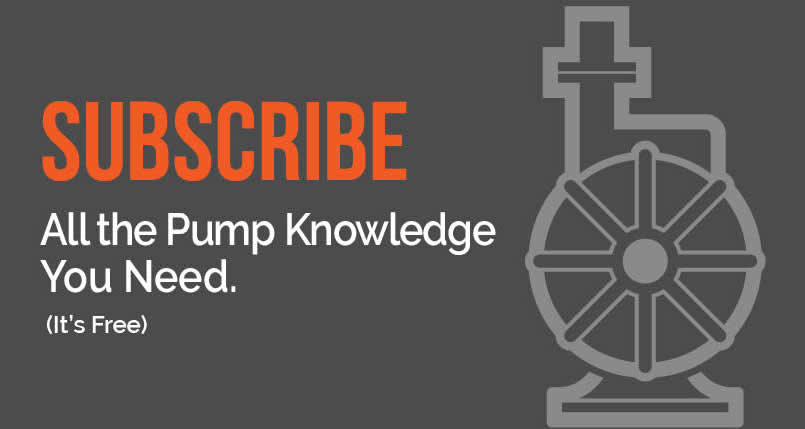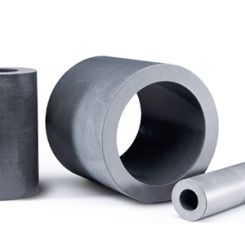
Every day, I receive calls, texts and emails from around the world asking for help with pump problems. A typical sampling includes: “The pump isn’t producing enough flow!,” “I can’t get enough pressure out of the pump!,” “The pump is making noise!” and “The pump is running hot!” At this point in the conversation, I don’t know the liquid, pump size, speed, temperature of the product or if the pump is one stage or 10 stage.
No two people are at the same level of pump experience and knowledge. Consequently, most people in the business will have a “pump-phone-a-friend” on speed dial (or for mobile users, it will be in their favorites). You may be that pump-phone-a-friend, you may be the person calling or you may be both. The intent of this column is to assist all parties in the educational process of logical pump problem resolution. I have written similar columns in the past, but based on recent events, it seemed like a good time to revisit the subject.
Upset Customer
If you are a salesperson, engineer or field service technician facing pump issues, I fully appreciate that when the pump is cranky and misbehaving, so is the customer. Your best friends in this situation are experience, system knowledge, the pump performance curve, the instruction and operating manual (IOM) and a cool head. Last, but not least, have your pump-phone-a-friend on standby.
While it is always a possibility, in reality, the actual problem is rarely the pump’s fault. Most often the issue is somewhere else in the system. Perhaps it’s the application, how it is operated or improper/lack of maintenance. The answer to the problem usually lies in the fundamentals of science, the basics of rotating equipment and perhaps a dash of deductive reasoning. Remember in high school when you told the teacher that you didn’t need to take math or science?
In the process of over-the-phone problem-solving, I will ask questions to get the basic information required to solve the issue. Sometimes this process gets bogged down because the person hasn’t conducted a preliminary investigation, doesn’t know the application or has a loose grasp of the basics. Other times, the person simply becomes impatient with what appears to them as a tedious process.
I have prepared a simple list of questions that I ask when someone calls me with a pump issue. This list is neither complete nor in any special order; these are just the more common issues.
What’s the Problem?
We begin by playing the game of symptoms and causes. I ask the caller to describe the pump problem in their own words with as much detail as they can muster. For this initial part of the process, a picture is worth a thousand words. Pictures that are in focus with high resolution are worth more than a few thousand words and are deeply appreciated.
From my more than 50 years of field experience with pump troubleshooting, I’ve observed that almost 80% of all centrifugal pump issues are on the suction side of the pump. I typically start looking there first. A simple sketch of the pipe arrangement with pipe sizes, elevations and associated components is helpful to explain the arrangement. Pictures of the suction pipe geometry are a bonus. Close-up pictures of the valves, strainers (if present) and elbows are also a big help.
Butterfly valves near the pump suction (6 to 10 pipe diameters) are typically a no-no (turbulent flow). Strainers or other suction side components without differential pressure measurements are a red flag, as they will easily starve the pump. Too many pipe elbows and “tees,” incorrectly sized pipes and inverted U piping arrangements (air traps) round out the list of bad actors in the suction system.
The Devil Is in the Details
Key information you should gather prior to the call to the pump problem solver:
- If applicable, I ask for the pump size, serial number, perhaps the bill of material (BOM) and a data sheet. From that data, I can see the materials of construction (MOC), the hydraulics (head and flow plus impeller trim diameter) for which the pump was sold, driver nameplate data and the liquid properties. Don’t forget to ask what changes were made after the pump was received.
- One of the most important pieces of required data will be the pump performance curve. If you believe in unicorns and rainbows, you may also ask for, but in my experience never receive, a copy of the system curve. That’s why pictures and sketches are paramount.
- Fluid properties—or as I like to call them, the “fluid personality”—are important to evaluate. Include temperature, vapor pressure, specific gravity, viscosity, suspended solids, pH/Newtonion or not, etc. You should already know why I am asking for this basic information. In simple terms, the temperature tells me about specific gravity, vapor pressure, impeller settings, bearing and lubrication issues and alignments. The vapor pressure leads to possible suction lift and cavitation issues. The specific gravity and viscosity will yield information about reduced hydraulic performance and increased brake horsepower if they are higher or different than reported. While air entrainment can be a liquid property, I will address that separately in part 2.
- We may know the head and flow the pump was sized for, but more important is to know where the pump is actually operating on the curve. You will need to measure and record the differential pressure across the pump. How else can you solve an alleged pump problem in the field if you don’t have gauges or other means of measuring the differential pressure across the pump? This includes both suction and discharge pressures. Even with a flooded suction arrangement, please understand that suction pressure can often be negative, so you need to use a compound suction gauge. Don’t assume suction pressure is zero. While on the subject of gauges, make sure the readings are corrected to a datum point, which is usually the impeller centerline, but it can also be another declared point.
- Net positive suction head available (NPSHa)—calculation or measurement—is another important piece of information to gather. I could fill a large book with stories that start with the statement, “I don’t need to calculate NPSHa because I have a flooded or pressurized suction.” Insufficient NPSHa turns out to be a common issue, whether from miscalculations and/or misunderstanding.
- Insufficient NPSHa, improper impeller clearance setting, a partially clogged suction line, air entrainment and unexpected viscosity levels will all manifest in very similar fashions. This is why it is important to have accurate data from the field.
Action Step
With permission from the system owner, operate the pump with the discharge valve in at least three or more throttled/different positions and record the differential pressures. Be careful not to operate very long at flow rates near shutoff (left side of the curve) or at run out conditions (right side of the curve). Based on the data collected, sketch your pump’s field performance against the published pump performance curve. Compare the field generated curve to the published curve. Need help? Refer to this list of specific Pumps & Systems articles I have written on this subject on how to perform these steps and interpret the data:
Further Investigation
If you cannot solve the problem based on the above data, here are some more in-depth items to consider:
- Why was this pump installed? Is it a new system or is it replacing an existing pump? If it is a replacement, ask why the pump is being replaced. Statements like “that is the fourth pump in there this year” are a good sign the issue is not the pump.
- Confirm pump speed rotations per minute (rpm). This can be accomplished with a tachometer or strobe. Be on the lookout for rare but possible single-phased motors, turbines with an erratic governor, variable frequency drive (VFD) issues, installations with a belt/sheave or engine drive problems.
- While vibration and temperature issues do pop up, they are not as frequent as other issues. Vibration is typically due to coupling alignment and pipe-related stress but can be from other reasons including cavitation or a clogged, damaged or unbalanced impeller.
- Confirm the direction of rotation. I mentioned this before, but I will also state that the pump may or may not have higher vibration levels. I have witnessed some pumps run very smoothly in the wrong direction. Generally, for pumps with impellers of low to medium specific speed, the head and flow will be 50% of what it should be. The actual data will depend heavily on the specific speed and the system design. Use the 50% marker as a rule of thumb.
Why Ask All These Questions?
In the words of the fictional detective Sherlock Holmes, “When you have eliminated the impossible, whatever remains, however improbable, must be the truth.” Further, over the years I have become a student (albeit a reluctant one) of Occam’s razor. Briefly explained, it is not an internet-based program for cheap razor blades, but a problem-solving philosophy wherein the simplest answer is normally the correct one when compared to complex choices. I find this axiom to be true over 80% of the time.
Ask “why” many times and dig deep into the details. Wrought from years of experience, I will not only ask if you checked the direction of rotation but how you did it. I will ask if you used a strobe tachometer to measure speed and what object you dialed in for focus. Was it a coupling bolt or a key seat? The answer can make a world of difference. When the bearing was running hot, was it hot to your touch (subjective) or did you use an infrared thermometer or other instrument (objective)? When I ask if you set the impeller clearance, I will ask how you did it and the final setting.
Next Steps
If you don’t know how to investigate these issues, and/or you are simply not comfortable with the process, then proactively build a network of pump friends by reaching out to the pump manufacturer, professional organizations or your pump-phone-a-friend or by consulting books on the subject.
Through the years, I have written columns for all of the above issues except perhaps vibration. There are too many articles to reference here except to state they are all available on the Pumps & Systems website.
I will continue this problem-solving narrative in the next issue.
Never stop learning.
References
- Troubleshooting Centrifugal Pump Field Problems, Robert Perez
- Pump Users Handbook Life Extension, Heinz Bloch and Alan Budris
- Centrifugal Pump Sourcebook, John W. Dufour and William E. Nelson
- Centrifugal Pump Clinic, Igor J. Karassik

